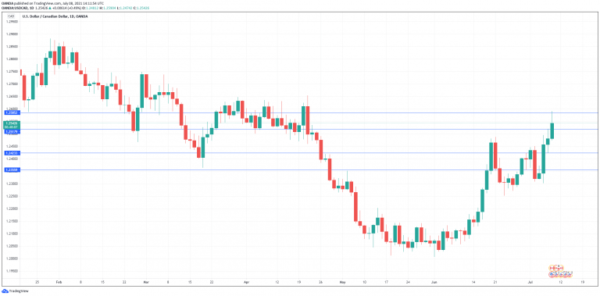The Canadian dollar continues to lose ground this week. In the North American session, USD/CAD is trading at 1.2552, up 0.57% on the day.
It has been a dismal week for the Canadian dollar, with USD/CAD jumping 1.88%. Earlier in the day, the pair climbed to 1.2590, its highest level since June 21. The Canadian dollar, which is sensitive to commodity prices, has been hurt by oil prices tumbling by some 6% in just three days. With the collapse of the OPEC+ talks, there are growing concerns that the current production agreement will expire and producers will sharply increase production in order to gain market share.
Canada Ivey PMI jumps
There was positive news from Canada’s Ivey PMI, which was much stronger than expected. The PMI, which covers all sections of the Canadian economy, accelerated to 71.9 in June, up from 64.7 beforehand. The PMI is well into expansionary territory, with a reading above 50 pointing to growth. Attention will now shift to Canada’s June employment report, with the economy projected to have created 195 thousand jobs in June, compared to a loss of 68 thousand in May.
The FOMC minutes turned out to be a non-event, as Fed policymakers “talked the talk” about tapering but failed to provide any timelines for a tightening in policy. Some members called for a taper, arguing that the economic recovery was moving more quickly than expected and inflation was on the rise. Still, the majority view was that currently there was no need for any shift in policy, as the economy still needed to make “substantial further progress”. There were no clues as to the timing of a taper, but one takeaway from the minutes is that there is only limited support for any reduction in QE.
USD/CAD Technical
- USD/CAD is testing resistance at 1.2517. Above, there is resistance at 1.2585
- On the downside, there is support at 1.2423. Below, there is support at 1.2355














